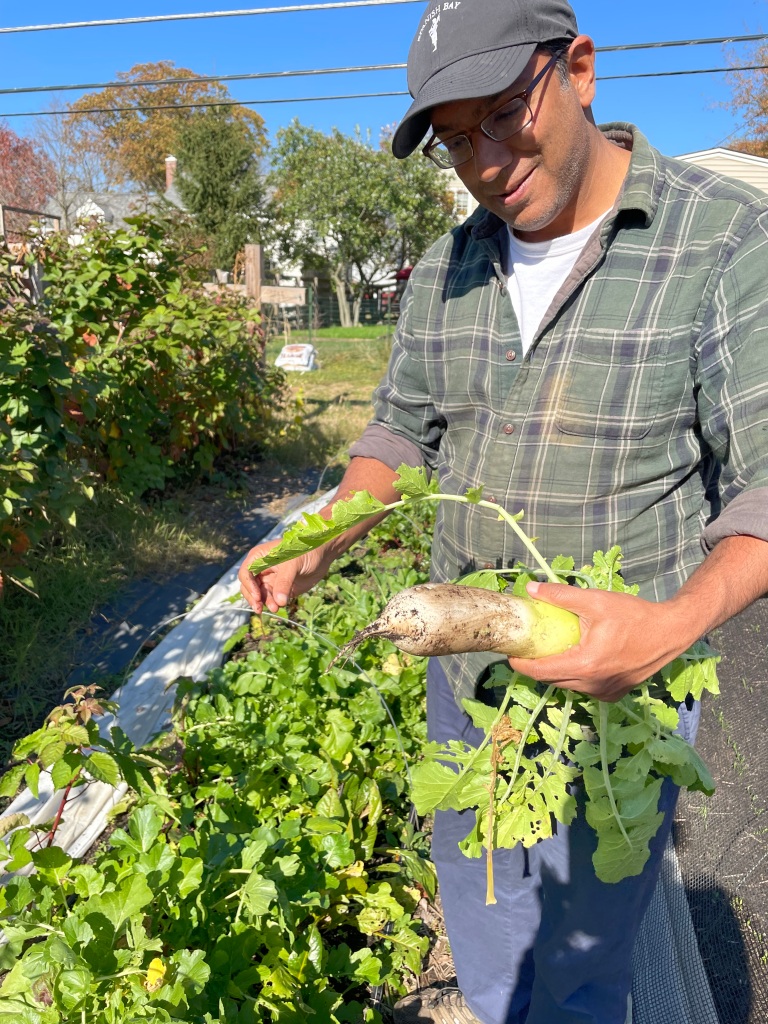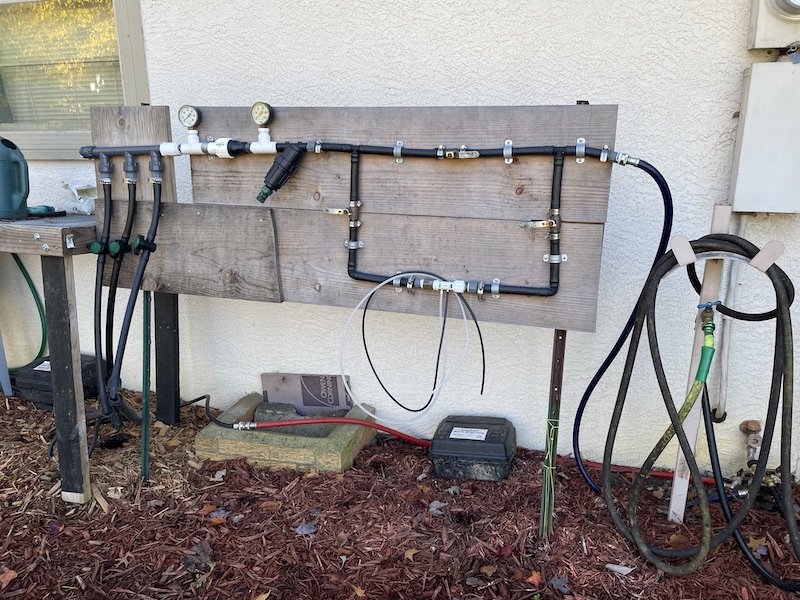For the past few years, many people have asked me if I heard about the doctor in Clintonville who started a farm. None of them knew him or could tell me his name. He was a mystery farmer. Over time, I came to learn he didn’t just live in the neighborhood, but one street over from us. I tried to figure out which house was his. I craned my neck to peek over and through hedges as I walked Thompson. And then, one recent Sunday morning I met him as he was walking his dog down the street in front of our house. We exchanged numbers and today, I got to visit with Dr. Neeraj Tayal. Who literally lives around the corner from me. Well two corners, but you get my point. Really close.
From the moment he greeted me on the driveway until I said goodbye to he and his wife Suzanne well over an hour later, Neeraj was smiling. Something told me he was always like that, not just on unseasonably warm and sunny Thursday afternoons in early November. It’s not everyday you meet someone with a resting smiley face.
When we met on the street, Neeraj briefly shared that he had been to Over the Fence for a tour which inspired him to start farming. Given my ongoing uncertainty about what OTFUF_2.0 will look like, that meant A LOT to me to hear. Today he and Suzanne recalled that tour and how Neeraj came reluctantly, dragging his feet down the block. But, once we was here, he began to envision new ways to engage his longtime love of plants. He picked up a brochure for the OSU Master Urban Farmer Workshop Series that was on display and signed up.
It wasn’t easy for him to find the time for the classes nor imagine how he would maintain a backyard farm. He is a practicing physician and Clinical Professor of Medicine and a father of four, after all. But somehow he and his family made it work. And now, five years later, they have a thriving community farm he tends with four other families.
These longtime homeschooling friends gather every Saturday for 2 hours. As I’ve done at OTFUF, Neeraj serves as the farmer-manager. He determines the jobs that need to be done, and directs his folks on how they can help. He has also reduced his hours at the medical center so he has time off during the week to work the land and spend more time with his family. In addition to their CSA work, Suzanne using the farm as a lab for a homeschool science club.
Once I got home, I read Neeraj’s professional bio and was blown away by how clearly the farm seems to manifest his medical mission. He wrote, “I am particularly aware of the benefits of preventive health care and chronic disease management and the care for acute illnesses. I’m passionate about developing new and innovative ways to improve patient experience…” Sounds a whole lot like Hippocrates call to “Let food to be thy medicine and medicine be thy food.”
Beyond the human aspects, Neeraj’s work as a medical professional show up in his approach to farming itself. While we spoke he drew comparisons between caring for plants and caring for people. In both cases, he observes and asks questions. Does a physical examination and makes assessments about maladies and treatments. What’s underlying this issue? Nutrition? Environmental factors? In the hospital and in the field, Dr. Neeraj makes diagnoses and administers prescriptions.
So it seemed to make perfect sense that Neeraj’s farm reads like a test case for Jean-Michel Fortier’s Market Gardenner methodology, which served as an early inspiration. The Dr.’s science background serves him well in this regard. I couldn’t help laughing as he displayed his math wizardry around irrigation and fertilizer calculations compared to my more expressive arts-based techniques. The results of his medical assessment and computations were evident in the rows of fall proudce ready for harvest, seedlings preparing to overwinter, and cover crops doing their magic.
Talking to Neeraj simultaneously helped me chill out about making plans for the future AND think about new ways to get my shit together. It was so great to meet him and hope we can keep our exchange going, inspiring one another to keep growing food and building community.




